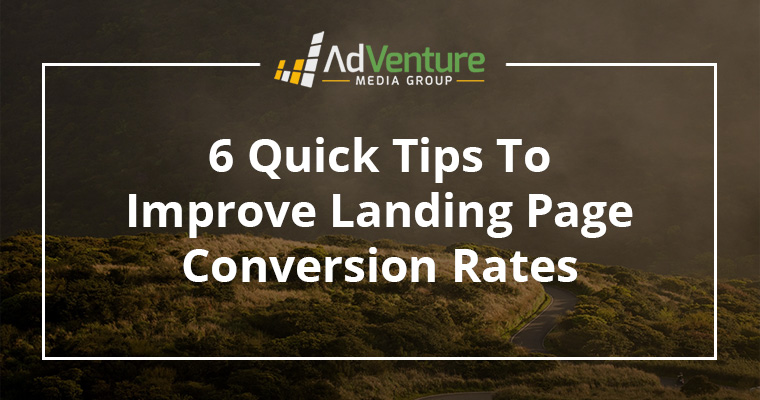
This is a sponsored post written by The AdVenture Media Group. The opinions expressed in this article are the sponsor’s own.
The AdVenture Media Group has helped hundreds of companies increase their website conversion rates by reviewing the fundamental makeup of their landing pages. While conversion rate optimization is an entire field of study unto itself, I thought I’d share six essential components of landing page optimization.
We know that we won’t ever convince someone they need to buy our product or use our service. As marketers, we won’t be motivating anyone to act if they’re essentially comfortable in their current situation. However, you could and should be making a convincing argument to those already interested in your products or services that you’re their best option. In order to make that argument as effectively as possible, it’s important to create your landing pages with a few key elements in mind.
Brevity and Clarity Of Copy
Website visitors don’t read. They scan.
Important text should be formatted in bullet points, short lists and callouts. Avoid long paragraphs in almost every instance, and even avoid complete sentences when possible.
Each page should have a clear headline and sub-headline. Page headlines are the first things to be read and they provide context to the visitor. The effectiveness of the headline and sub-headline will help the visitor decide if they are going to stay on the page.
Use and inverted pyramid structure with the copy on each page. Conclusions and key points should come first. Supporting information should go further down on the page.
Understanding Triggers
Triggers are what we use to draw attention to an action we want our visitors to take. Triggers usually come in the form of links, buttons or other calls to action. But not all triggers should be treated the same way. The type of action we want the visitor to take could impact the sort of trigger we should be using.
If the hesitation or fear of completing a given objective is that the task is too difficult, the trigger should be a facilitator, telling the visitor that “this is easy”.
If someone can easily accomplish a task but lacks the motivation to do so, a spark trigger is probably the most effective approach. The call to action should be framed with a sense of motivation.
If motivation and ability are there, the call to action should be straightforward. Don’t try to motivate someone who’s already motivated. It makes you look bad.
Affinity
We want to be understood and recognized for who we are. Your visitors are affiliated with certain groups and they share certain core beliefs. The editorial tone of your site should confirm (to a degree) and validate your visitors’ sense of belonging. Empathize with their struggles, and identify with their affiliations.
You are one of them and they are one of you.
Reciprocity
When someone gives you an unsolicited gift, we develop an innate need to reciprocate. Studies have shown that even small token gestures will often motivate the recipient to return the gift with a disproportionately large reciprocation.
Offer ebook downloads, white-papers, tip sheets etc. The idea is not to convince someone to buy your product or sign up for a service with an ebook. The idea is to create a subtle psychological need to reciprocate (by choosing you as their brand or company of choice).
Social Proof
We like what other people like. That’s a core principle in basic societal interaction.
For social proof to be an effective aspect of our web design, we need large numbers of people acting a certain way, and we need those people to be as much like us as possible.
Instead of highlighting your product or service with marketing hyperbole (industry-leading, best in class, the ultimate …) validate your brand with numbers. Attendees to your events, customers using your software, clients using your service etc.
Even more important, show how your customers and clients were in a similar position or experiencing a similar frustration as your visitors.
Don’t Defy Convention
Apple and Amazon can pioneer new conventions in web design … you can’t.
To quote web usability pro Don Norman:
“A convention is a cultural constraint, one that has evolved over time. Conventions are not arbitrary: they evolve, they require a community of practice. They are slow to be adopted, and once adopted, slow to go away. So although the word implies voluntary choice, the reality is that they are real constraints upon our behavior. Use them with respect. Violate them only with great risk.”
Make every element on the page as familiar as possible. Don’t make a complex (or cool) way for people to find essential information. Follow the same structure for navigation that other similar sites are using.
I hope these ideas help you enhance your landing pages and increase your conversion rates. To learn more about our landing page optimization services, please visit AdVenture Media Group.
Keep on testing … and keep on truckin.
Image Credits
Featured Image: Image by Adventure Media Group. Used with permission.
In-post Photo#1: gpointstudio/Shutterstock.com






